Ornitholestes hermanni Osborn, 1903

(Da: it.wikipedia.org)
Phylum: Chordata Haeckel, 1874
Subphylum: Vertebrata Cuvier, 1812
Classe: Dinosauria Owen, 1841
Ordine: Saurischia Seeley, 1887
Famiglia: Ornitholestidae Paul, 1988
Genere: Ornitholestes Osborn, 1903
Descrizione
Ad oggi, l'Ornitholestes è conosciuto per un unico scheletro parziale dal cranio schiacciato, ritrovato a Bone Cabin Quarry, nei pressi di Medicine Bow, Wyoming, nel 1900. Fu descritto per la prima volta da Henry Fairfield Osborn nel 1903. Una mano incompleta è stata in seguito attribuita a Ornitholestes, anche se alcuni studi attribuiscono tale materiale a Tanycolagreus. La specie tipo è O. hermanni, il nome specifico onora l'American Museum of Natural History allestito da Adam Hermann. L'ornitoleste era un piccolo carnivoro bipede, che viveva negli stessi ambienti dei grandi erbivori Brontosaurus e Stegosaurus, così come dei carnosauri del genere Allosaurus. Per lungo tempo confuso con Coelurus, un dinosauro scoperto nell'Ottocento sulla base di resti più frammentari, l’Ornitholestes in realtà appartiene a una famiglia a sé stante: quella degli ornitolestidi. Questo animale è attualmente classificato come un rappresentante primitivo dei teropodi conosciuti come Maniraptora. Benché spesso raffigurato nell'atto di dare la caccia a uccelli primitivi (il suo nome significa infatti "ladro di uccelli"), l'ornitoleste probabilmente non era un predatore eccessivamente veloce, nonostante la forma e le dimensioni inducano a pensarlo. In realtà questo carnivoro era con tutta probabilità un cacciatore di sottobosco, che tendeva agguati agli animali più piccoli, non certo un corridore: ciò è dimostrato dalle dimensioni del femore, più lungo rispetto alla tibia: negli animali corridori, il rapporto è inverso. L'ornitoleste possiede alcune caratteristiche singolari: la testa, per esempio, è stranamente piccola in rapporto al resto del corpo. Inoltre, alcuni ricercatori pensano che essa possedesse un piccolo corno nasale; la questione è lungi dall'essere risolta, anche se una struttura analoga è presente sul cranio di un animale molto simile, il Proceratosaurus.
Diffusione
Vissuto nel Tardo periodo Giurassico, i cui resti fossili sono stati ritrovati negli strati della Morrison Formation del Wyoming e del Colorado.
Bibliografia
–Turner, C.E. and Peterson, F., (1999). "Biostratigraphy of dinosaurs in the Upper Jurassic Morrison Formation of the Western Interior, U.S.A." Pp. 77-114 in Gillette, D.D. (ed.), Vertebrate Paleontology in Utah. Utah Geological Survey Miscellaneous Publication 99-1.
–Paul D. Brinkman, 2010, The Second Jurassic Dinosaur Rush: Museums & Paleontology in America at the Turn of the Twentieth Century. University of Chicago Press, 345 pp.
–
–Colbert, Edwin H. (Edwin Harris); Knight, Charles Robert (1951). The dinosaur book: the ruling reptiles and their relatives. New York: McGraw-Hill. p. 152.
–
–Gilmore, C.W., 1920, "Osteology of the carnivorous Dinosauria in the United States National Museum, with special reference to the genera Antrodemus (Allosaurus) and Ceratosaurus", Bulletin U.S. National Museum CX: 1-154.
–Hay, O.P., 1930, Second Bibliography and Catalogue of the Fossil Vertebrata of North America. Carnegie Institution of Washington. 390(II): 1-1074.
–Cristiano dal Sasso & Simone Maganuco, 2011, Scipionyx samniticus (Theropoda: Compsognathidae) from the Lower Cretaceous of Italy - Osteology, ontogenetic assessment, phylogeny, soft tissue anatomy, taphonomy and palaeobiology, Memorie della Società Italiana de Scienze Naturali e del Museo Civico di Storia Naturale di Milano XXXVII(I): 1-281.
–Godefroit, Pascal; Cau, Andrea; Hu, Dong-Yu; Escuillié, François; Wu, Wenhao; Dyke, Gareth (2013). "A Jurassic avialan dinosaur from China resolves the early phylogenetic history of birds". Nature. 498 (7454): 359-362.
–Hendrickx, C., Hartman, S.A., & Mateus, O. (2015). An Overview of Non- Avian Theropod Discoveries and Classification. PalArch’s Journal of Vertebrate Palaeontology, 12(1): 1-73.
–Chapelle, Kimberley E.; Norell, Mark; Ford, David P.; Hendrickx, Christophe; Radermacher, Viktor J.; Balanoff, Amy; Zanno, Lindsay E.; Choiniere, Jonah N. (2021). "A CT-based revised description and phylogenetic analysis of the skull of the basal maniraptoran Ornitholestes hermanni Osborn 1903". Conference program of the 81st Annual Meeting of the Society of Vertebrate Paleontology.
–Rothschild, B., Tanke, D. H., and Ford, T. L., 2001, Theropod stress fractures and tendon avulsions as a clue to activity: In: Mesozoic Vertebrate Life, edited by Tanke, D. H., and Carpenter, K., Indiana University Press, p. 331-336.
–Osborn, Henry Fairfield (1903). "Ornitholestes hermanni, a new compsognathoid dinosaur from the Upper Jurassic". Bulletin of the American Museum of Natural History. 19 (12): 459-464.
–Osborn, Henry Fairfield (1917). "Skeletal adaptations of Ornitholestes, Struthiomimus, Tyrannosaurus". Bulletin of the American Museum of Natural History. 35 (43): 733-771.
–Ostrom, John H. (1969). "Osteology of Deinonychus antirrhopus, an unusual theropod from the Lower Cretaceous of Montana". Peabody Museum of Natural History Bulletin. 30: 1-165.
–Ostrom, John H. (1980). "Coelurus and Ornitholestes: Are they the same?". In Jacobs, Louis L. (ed.). Aspects of Vertebrate History: Essays in Honor of Edwin Harris Colbert. Museum of Northern Arizona Press. pp. 245-256.
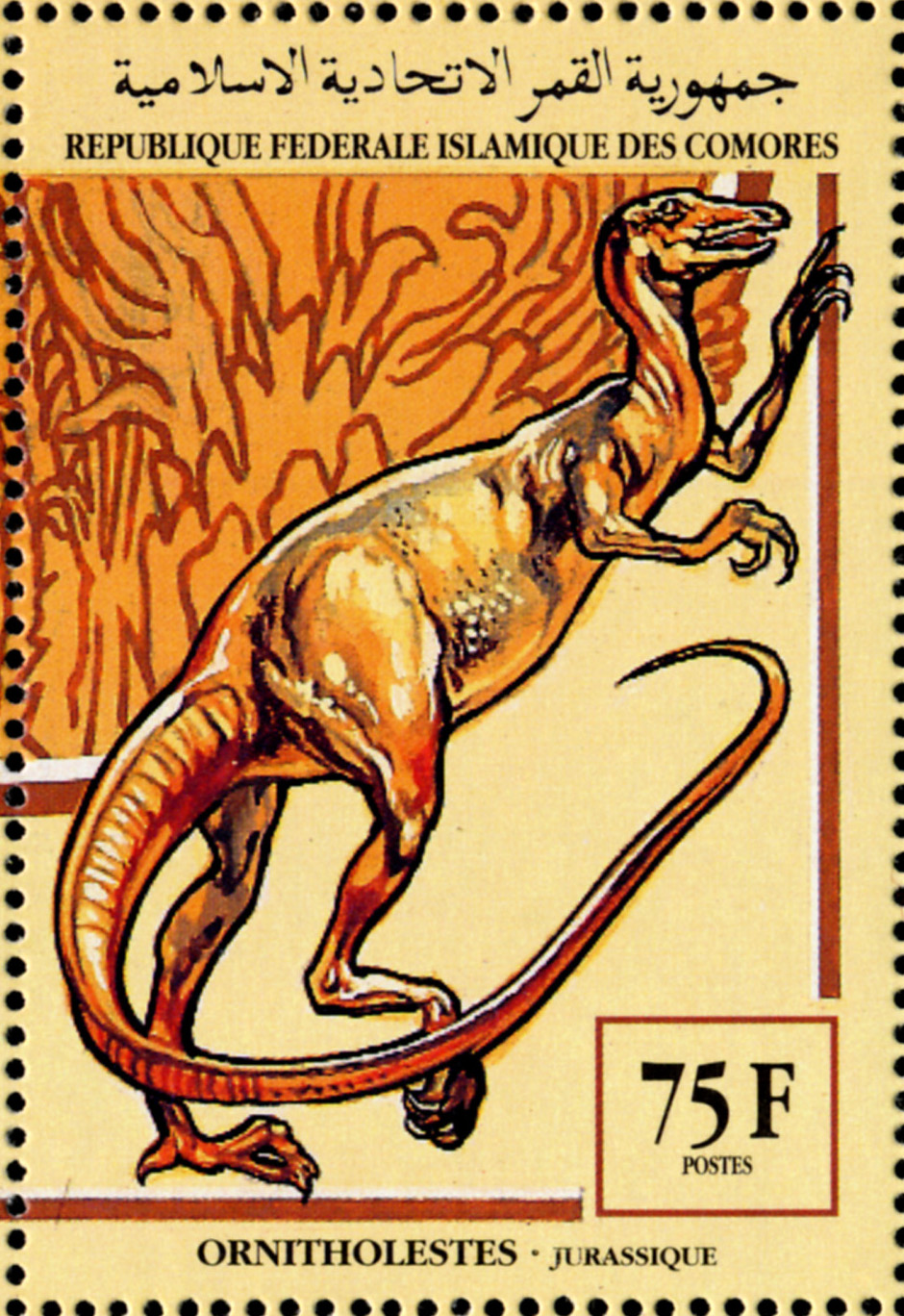
|
Data: 05/04/1994
Emissione: Animali preistorici Stato: Federal and Islamic Republic of Comoros Nota: Emesso in un foglio di 16 v. diversi |
|---|
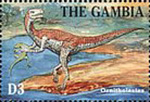
|
Data: 06/02/1995
Emissione: Animali preistorici Stato: Gambia |
|---|
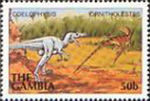
|
Data: 23/06/1997
Emissione: Dinosauri Stato: Gambia |
|---|
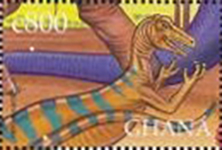
|
Data: 01/03/1999
Emissione: Dinosauri Stato: Ghana |
|---|
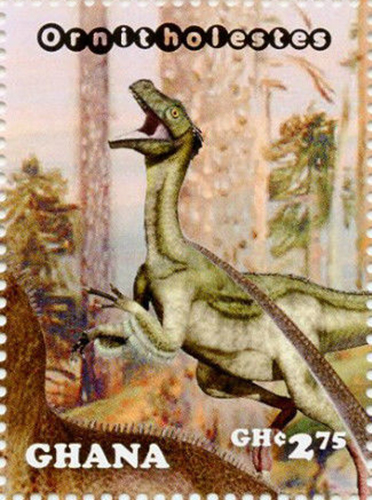
|
Data: 15/09/2014
Emissione: Dinosauri Stato: Ghana |
|---|
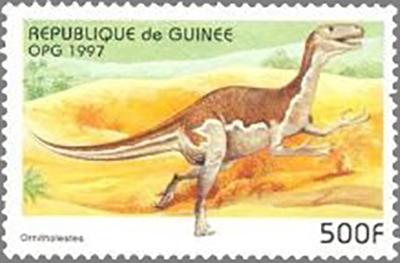
|
Data: 15/12/1997
Emissione: Fauna preistorica Stato: Guinea |
|---|
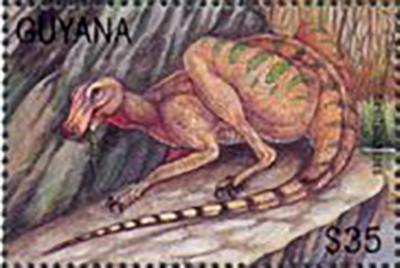
|
Data: 29/01/1996
Emissione: Animali preistorici Stato: Guyana Nota: Emesso in un foglietto di 12 v. diversi |
|---|
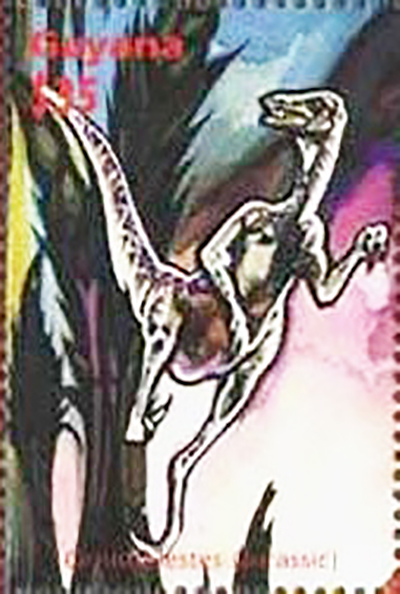
|
Data: 29/01/1996
Emissione: Animali preistorici Stato: Guyana Nota: Emesso in un foglietto di 12 v. diversi |
|---|
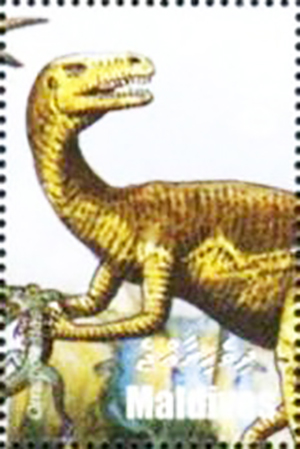
|
Data: 26/01/2005
Emissione: Animali preistorici Stato: Maldives Nota: Emesso in un foglietto di 4 v. diversi |
|---|
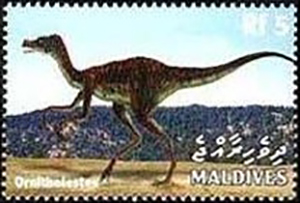
|
Data: 22/06/1999
Emissione: Animali preistorici Stato: Maldives |
|---|
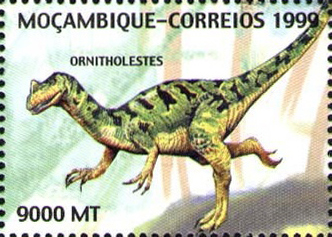
|
Data: 24/09/1999
Emissione: Natura Stato: Mozambique |
|---|
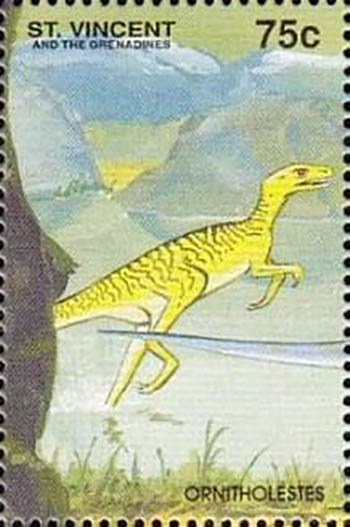
|
Data: 20/04/1994
Emissione: Animali preistorici Stato: St. Vincent and the Grenadines Nota: Emesso in un foglietto di 12 v. diversi |
|---|

|
Data: 20/04/1994
Emissione: Animali preistorici Stato: St. Vincent and the Grenadines Nota: Emesso in un foglietto di 12 v. diversi |
|---|
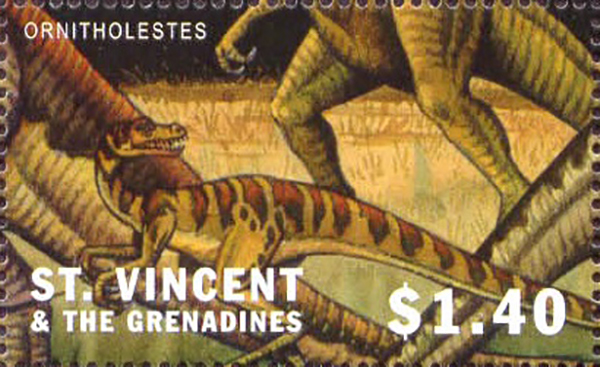
|
Data: 15/10/2001
Emissione: Quando i dinosauri dominavano la terra Stato: St. Vincent and the Grenadines |
|---|
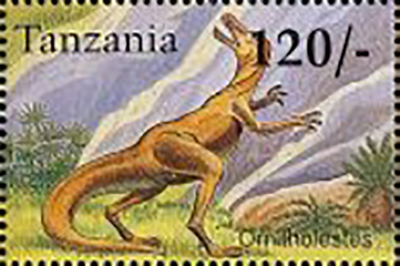
|
Data: 26/12/1994
Emissione: Animali preistorici Stato: Tanzania Nota: Emesso in un foglietto di 16 v. diversi |
|---|

|
Data: 04/05/1995
Emissione: Animali preistorici Stato: Sierra Leone Nota: Emesso in un foglietto di 12 v. diversi |
|---|
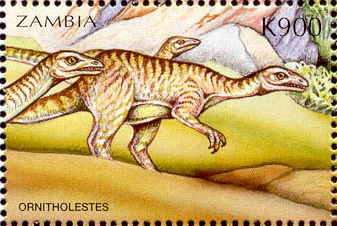
|
Data: 28/09/1999
Emissione: I Theropoda Stato: Zambia Nota: Emesso in un foglietto di 9 v. diversi |
|---|